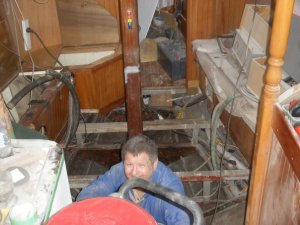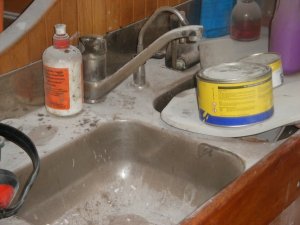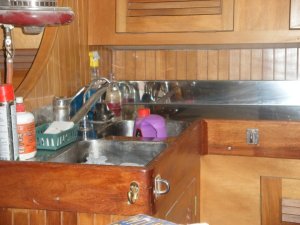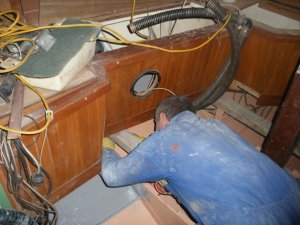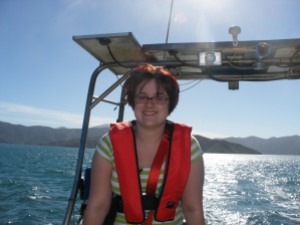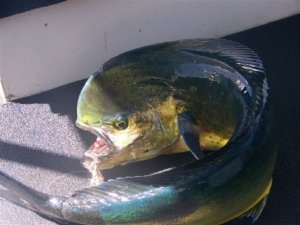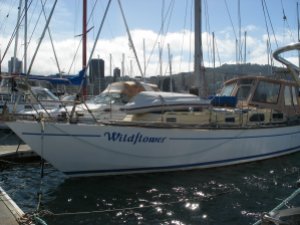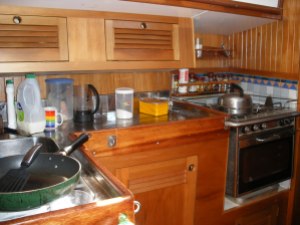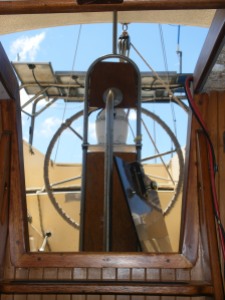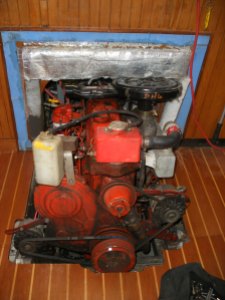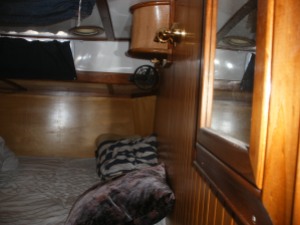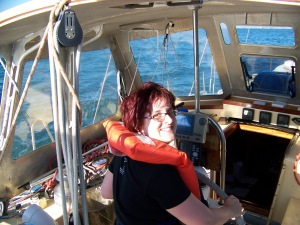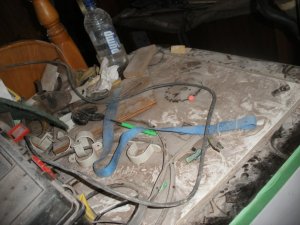
Someone once described cruising as “the art of boat maintenance in exotic locations” – and I am in absolutely no doubt this is true. But what they fail to mention is the large amount of work that needs to be done before setting out for more tropical climes.
Evidence of this is The List – a document Paddy uses to keep track of what needs to be done before hitting the waves. Ever since I have known Paddy The List has been shrinking and growing – as quickly as items were ticked off, more were added, but finally now it seems to be on a downward trend.
One of the biggest jobs to be crossed off The List involved more dust and mess than I had seen in all the grotty student flats I have lived in put together – and that’s saying something!
Sanding and repainting a boat’s bilges is a once-every-10-years job, and unfortunately Wildflower’s 10 years were up.
Before I met Wildflower I didn’t really know what a bilge was. Through pirate insults like ‘scurvy bilge rat’ I’d kind of figured it was something sewer-like and gross, but that was the extent of my knowledge.
The bilge is actually the inside of the bottom of the boat – (“the lowest compartment inside the hull of a ship” according to fount of all knowledge that is Wikipedia). It’s where water that overflows from the decks of the ship collects. When there is too much water sloshing about on deck (say during a storm) to make it safe to walk on, the boat is designed to funnel this water to the bottom where it can be sucked out by bilge pumps (this is a very amateur summary so feel free to correct me!)
The scurvy bilge rat insult stemmed from the fact that, along with water, bird poo, food scraps, and bodily waste from dirty sailors of old, also ended up in the bilges – so it really wasn’t a pleasant place to be. Before mechanisation bilges used to have to be pumped by hand and this rather disgusting job was reserved for junior sailors or those that had managed to upset the captain.
So the bilge is actually a pretty important part of the boat – and because bilge water can get quite acidic and generally grotty, it’s important to have a good layer of paint on the bottom to prevent it from eating through.
While this sounds relatively simple, the 10 year repaint actually involves ripping up the floor of the boat, sandblasting what is underneath to within an inch of its life and twisting your body into all sorts of unnatural positions (a practice Paddy has dubbed Boat Yoga) in order to repaint it.
The sandblasting process involved many long nights and weekends and rendered the boat uninhabitable. Paddy ended up living in a backpackers near the marina (aka the Roach Motel) so he could come and go from the boat during whatever insane hours he needed to. The result was more dirt and dust than I actually thought existed in the world.
While I was more hindrance than help with the sandblasting, I really wanted to be able to do something to help Paddy so I embarked on the biggest cleaning expedition of my entire life. While Paddy was playing contortionist with a paintbrush I turned my hair, clothing and skin grey attacking the dust. For a while it was exceedingly frustrating because for every layer of dust I removed a new ones seemed to appear overnight. But it was an incredibly fulfilling feeling when surfaces began to reappear again. It also makes me feel a lot safer knowing exactly what is at the bottom of the boat and that it’s clean and shiny and newly painted.
I am pleased that particular hurdle is over though – Paddy pretty much exhausted himself – but with a stubborn and determined streak a mile wide, he wasn’t going to slow down until the job was done. I’m sure Wildflower appreciates it though – I know I do.
